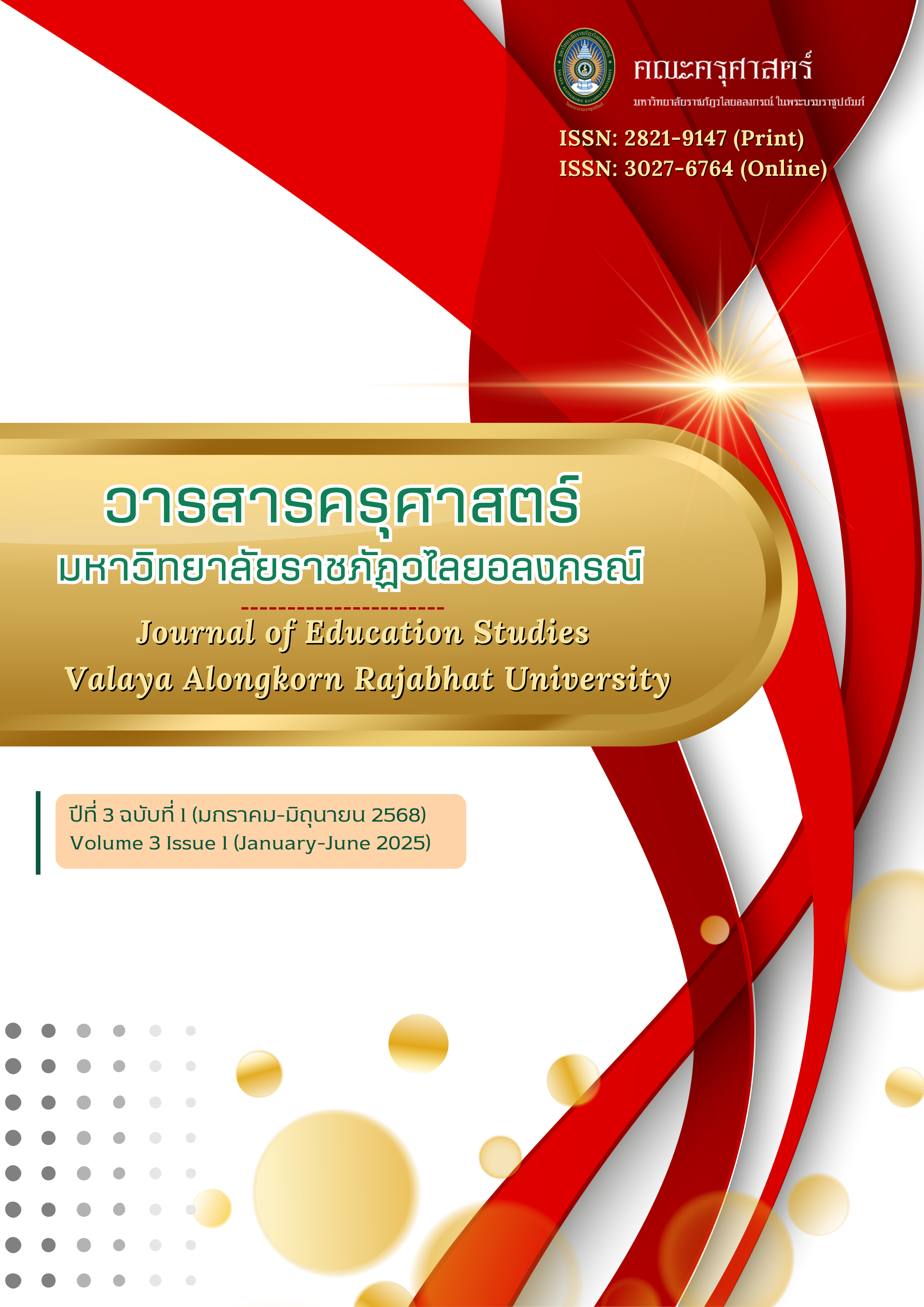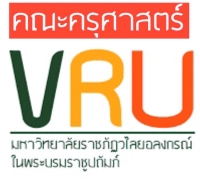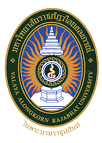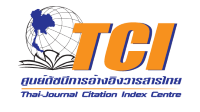การพัฒนาสมรรถนะวิจัยของนักศึกษาวิชาชีพครู ด้วยการจัดการเรียนรู้แบบใช้วิจัยเป็นฐานร่วมกับการออกแบบอิงบริบทโรงเรียน
คำสำคัญ:
การเรียนรู้แบบใช้วิจัยเป็นฐาน, การออกแบบอิงบริบทโรงเรียน, การคิดเชิงออกแบบบทคัดย่อ
การวิจัยมีวัตถุประสงค์เพื่อพัฒนาสมรรถนะวิจัยให้แก่นักศึกษาวิชาชีพครูคณะศึกษาศาสตร์ มหาวิทยาลัยสงขลานครินทร์ วิทยาเขตปัตตานี ด้วยการจัดการเรียนรู้แบบใช้วิจัยเป็นฐานร่วมกับการออกแบบอิงบริบทโรงเรียน มีตัวอย่างเป็นนักศึกษาวิชาชีพครูชั้นปีที่ 3 จำนวน 22 คน เครื่องมือวิจัยประกอบด้วยแผนจัดการเรียนรู้ แบบทดสอบความรู้วิจัย แบบประเมินสภาวะอารมณ์และพฤติกรรมการเรียน แบบประเมินผลงานวิจัย แบบทดสอบทักษะการเขียนรายงานวิจัย และมาตรวัดการรับรู้ความสามารถตนเองในการวิจัย ดำเนินการวิจัยในภาคเรียนที่ 2 ปีการศึกษา 2566 มีการวิเคราะห์ข้อมูลด้วยสถิติเชิงบรรยาย ได้แก่ ค่าเฉลี่ย ส่วนเบี่ยงเบนมาตรฐาน ค่าสัมประสิทธิ์สหสัมพันธ์เพียร์สัน และสถิติเชิงสรุปอ้างอิง ได้แก่ การทดสอบทีแบบประชากรสองกลุ่มไม่เป็นอิสระต่อกัน และการทดสอบทีแบบประชากรสองกลุ่มเป็นอิสระต่อกัน
ผลการวิจัยที่สำคัญพบว่า
1. หลังจัดการเรียนรู้นักศึกษามีความรู้วิจัยสูงขึ้นอย่างมีนัยสำคัญทางสถิติที่ระดับ .05 (t21 = 9.766, p < .001, d =082) โดยนักศึกษาสามารถทำวิจัยเพื่อพัฒนาการเรียนรู้ได้อย่างเหมาะสมกับบริบทปัญหาของนักเรียน (M = 23.43, SD = 1.54) และมีการรับรู้ความสามารถตนเองในการทำวิจัยในภาพรวมอยู่ในระดับปานกลาง (M = 3.40, SD = 0.37)
2. การจัดการเรียนรู้แบบใช้วิจัยเป็นฐานร่วมกับการออกแบบอิงบริบทโรงเรียนช่วยเสริมสร้างให้สภาวะอารมณ์ในการเรียนรู้และพฤติกรรมการเรียนรู้เชิงบวกของนักศึกษามีแนวโน้มสูงขึ้นในภาพรวม
3. ทักษะการทำวิจัยของนักศึกษาไม่มีความแตกต่างกันระหว่างพื้นฐานความรู้เดิม แต่การรับรู้ความสามารถตนเองในการทำวิจัยมีความแตกต่างกันระหว่างกลุ่มพื้นฐานความรู้เดิมของนักศึกษาอย่างมีนัยสำคัญทางสถิติที่ระดับ .05 (t20 = 2.270, p < .034, d = 474)
เอกสารอ้างอิง
จุฑา ธรรมชาติ. (2555). การวิจัยและพัฒนารูปแบบการจัดการเรียนรู้แบบใช้วิจัยเป็นฐานในรายวิชาการวิจัยทางการศึกษา. วารสารสงขลานครินทร์ ฉบับสังคมศาสตร์และมนุษยศาสตร์, 18(1), 183-214.
จุฑา ธรรมชาติ. (2560). ผลการสอนปฏิบัติการตามแนวคิดวิจัยเป็นฐานที่มีต่อทักษะพื้นฐานทางการวิจัยและเจตคติต่อการวิจัยของนักศึกษาคณะศึกษาศาสตร์ มหาวิทยาลัยสงขลานครินทร์ วิทยาเขตปัตตานี. วารสารวิทยบริการ มหาวิทยาลัยสงขลานครินทร์, 28(3), 64-72.
ทิตยา ศรีสุวรรณ, จุฑา ธรรมชาติ, ศุภกาญจน์ บัวทิพย์, ชิดชนก เชิงเชาว์, จิระวัฒน์ ตันสกุล และบุษบรรณ เชิดเกียรติสกุล. (2568). มาตรวัดการรับรู้ความสามารถตนเองในการวิจัย: การวิเคราะห์คุณสมบัติจิตมิติ. วารสารเทคโนโลยีภาคใต้, 18(2).
ทิศนา แขมมณี. (2566). ศาสตร์การสอน: องค์ความรู้เพื่อการจัดกระบวนการเรียนรู้ที่มีประสิทธิภาพ (ครั้งที่ 26). กรุงเทพฯ: สำนักพิมพ์จุฬาลงกรณ์มหาวิทยาลัย.
ประกาศคณะกรรมการคุรุสภา เรื่อง สาระความรู้ สมรรถนะและประสบการณ์วิชาชีพของผู้ประกอบวิชาชีพครู ผู้บริหารสถานศึกษา ผู้บริหารการศึกษา และศึกษานิเทศก์ ตามข้อบังคับคุรุสภาว่าด้วยมาตรฐานวิชาชีพ พ.ศ. 2556. (2556, 12 พฤศจิกายน). ราชกิจจานุเบกษา. เล่ม 130 ตอนพิเศษ 156 ง. หน้า 43-54.
สุวิมล ว่องวาณิช. (2557). การวิจัยปฏิบัติการในชั้นเรียน (ครั้งที่ 17). กรุงเทพฯ: สำนักพิมพ์แห่งจุฬาลงกรณ์มหาวิทยาลัย.
Bandura, A. (2001). Social cognitive theory: An agentic perspective. Annual Review of Psychology, 52(1), 1-26.
Bems, R., & Erickson, P. (2001). An interactive web-based model for the professional development of teachers in contextual teaching and learning. Bowling Green State University.
Bennett, J., & Holman, J. (2003). Context-based approaches to the teaching of chemistry: What are they and what are their effects? In Teaching scientific principles through contexts: Does it work? University of York Science Education Group.
Cross, N. (1982). Designerly ways of knowing. Design Studies, 3(4), 221-227. Retrieved from https://doi.org/10.1016/0142694X(82)90040-0
Davis, M., Hawley, P., McMullan, B., & Spilka, G. (1997). Design as a catalyst for learning. Association for supervision and curriculum development. Retrieved from https://archive.org/details/designascatalyst00davi/page/n11/mode/2up
de Vries, M. J. (2016). Teaching about technology: An introduction to the philosophy of technology for non-philosophers (2nd ed.). Springer.
Dym, C. L., Agogino, A. M., Eris, O., Frey, D. D., & Leifer, L. J. (2005). Engineering design thinking, teaching, and learning. Journal of Engineering Education, 94(1), 103-120.
Hendricks, C. C., & Fasse, B. B. (2012). The impact of a problem-based learning Launcher unit on eighth grade students’ motivation and interest in science. Paper presented at 2012 ASEE Annual Conference & Exposition, San Antonio, Texas. Retrieved from https://doi.org/10.18260/1-2--22063
Jong, O. D. (2006). Making chemistry meaningful: Conditions for successful context-based teaching. Education and Science, 31(142), 3-12.
Martin, L. (2015). The promise of the maker movement for education. Journal of pre-college engineering education research, 5(1), 30-39. Retrieved from https://doi.org/10.7771/2157-9288.1099
Papert, S., & Harel. I. (1991). Situating constructionism. Constructionism, 36(2), 1-11.
Razzouk, R., & Shute, V. (2012). What is design thinking and why is it important? Review of Educational Research, 82(3), 330-348.
Reynolds, B., Mehalik, M. M., Lovell, M. R., & Schunn, C. D. (2009). Increasing student awareness of and interest in engineering as a career option through design-based learning. International Journal of Engineering Education, 25(4), 788-798. Retrieved from https://www.ijee.ie/articles/Vol25-4/s18_ijee2173.pdf
Rowe, P. G. (1987). Design thinking. MIT press.
Standford d. School. (2013). An introduction to design thinking guide. The Institute of Design at Standford.






 คู่มือขั้นตอนการส่งบทความ
คู่มือขั้นตอนการส่งบทความ




